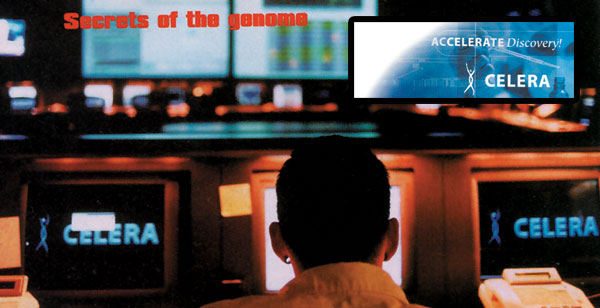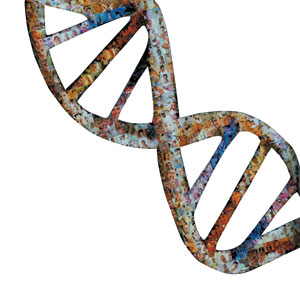If the information in DNA were written out on a piece of paper, it would stretch from the North Pole to the Equator.
The level of scientific knowledge we have arrived at today shows that the evident design and complex systems in living things make it impossible for them to have emerged by chance. For instance, thanks to the recent "Human Genome Project," the marvelous design and the enormous information content in human genes have been revealed for all to see.
 |
 |
In the framework of that project, scientists from many countries, from the United States to China, worked for 10 years to decipher one by one the 3 billion chemical codes in DNA. As a result, nearly all the information in human genes has been set out in its correct order.
Although this is a very exciting and important development, as Dr. Francis Collins, who leads the Human Genome Project states, so far only the first step has been taken in the decoding of the information in DNA.
In order to understand why it took 10 years and the work of hundreds of scientists to uncover the codes that make up this information, we have to understand the magnitude of the information contained within DNA.
 If the information in DNA were written out on a piece of paper, it would stretch from the North Pole to the Equator. |
There is enough information in the DNA of a single human cell to fill an encyclopedia of one million pages. It would be impossible to read it all in one lifetime. If one person set out to read one DNA code per second, non-stop, all day every day, it would take him 100 years. That is because the encyclopedia in question possesses nearly three billion different codes. If we wrote down all the information in DNA on paper, it would stretch from the North Pole to the Equator. That means some 1,000 large volumes—more than enough to fill a big library.
Even more important, all this information is contained in the nucleus of each and every cell, which means that as each individual consists of some 100 trillion cells, there are 100 trillion versions of the same library.
If we wish to compare this treasury of information with the level of knowledge so far reached by man, it is impossible to provide any example of the same magnitude. An unbelievable picture presents itself: 100 trillion x 1,000 books! That is more than the number of grains of sand in the world. Furthermore, if we multiply that number by the six billion people currently living on the Earth, and the billions more who have ever lived, then the number is beyond our capacity to grasp, and the amount of information stretches to infinity.
These examples are an indication of what imposing information we are living cheek by jowl with. We possess advanced computers that can store great amounts of information. However, when we compare DNA to these computers, we are amazed to see that the most modern technology—the product of the cumulative human labour and knowledge over the centuries—does not even possess the storage capacity of a single cell.
Gene Myers is one of the most prominent experts of Celera Genomics, the company that carried out the Human Genome project. His words regarding the outcome of the project are a statement of the great knowledge and design in DNA: "What really astounds me is the architecture of life…The system is extremely complex. It's like it was designed… There's a huge intelligence there." 68

Another interesting aspect is that all life on the planet has been produced according to the coded descriptions written in this same language. No bacterium, plant, or animal is formed without its DNA. It is quite evident that all of life emerges as the result of descriptions that employ the same language and stemming from the same source of knowledge.
This leads us to an obvious conclusion. All living things in the world live and multiply according to information created by one single intelligence.
This makes the theory of evolution utterly meaningless. That is because the foundation of evolution is "chance," but chance cannot create information. If one day the formula of a medicine that can cure cancer were found on a piece of paper, all of mankind would join forces to discover the scientist concerned and even give him an award. Nobody would think, "I wonder if the formula appeared when some ink was spilt onto the page." Everybody who possesses reason and clear thinking will think that that the formula was written by someone who had made a deep study of chemistry, human physiology, cancer, and pharmacology.
 |
The evolutionist claim that the information in DNA came about by chance is completely irrational, and is equivalent to saying that the formula on the paper also came about by chance. DNA contains the detailed molecular formulae of 100,000 types of proteins and enzymes, together with the delicate order governing how these will be used during production. Alongside these, it contains the production plans for the message-carrier hormones and the inter-cellular communications protocols they are used in, and all kinds of other complex and specified information.
To claim that DNA and all the information within it came about by chance events and natural causes reflects either total ignorance of the subject or materialist dogmatism. The idea that a molecule such as DNA, with all the magnificent information and complex structure it contains, could be the product of chance is not even worth taking seriously. Unsurprisingly, evolutionists try to gloss over the subject of the source of life, as with so many other subjects, by describing it as an "unsolved secret."
68. "Human Genome Map Has Scientists Talking About the Divine” by Tom Abate, San Francisco Chronicle, February 19, 2001, (emphasis added)